Protection from the dirty environment
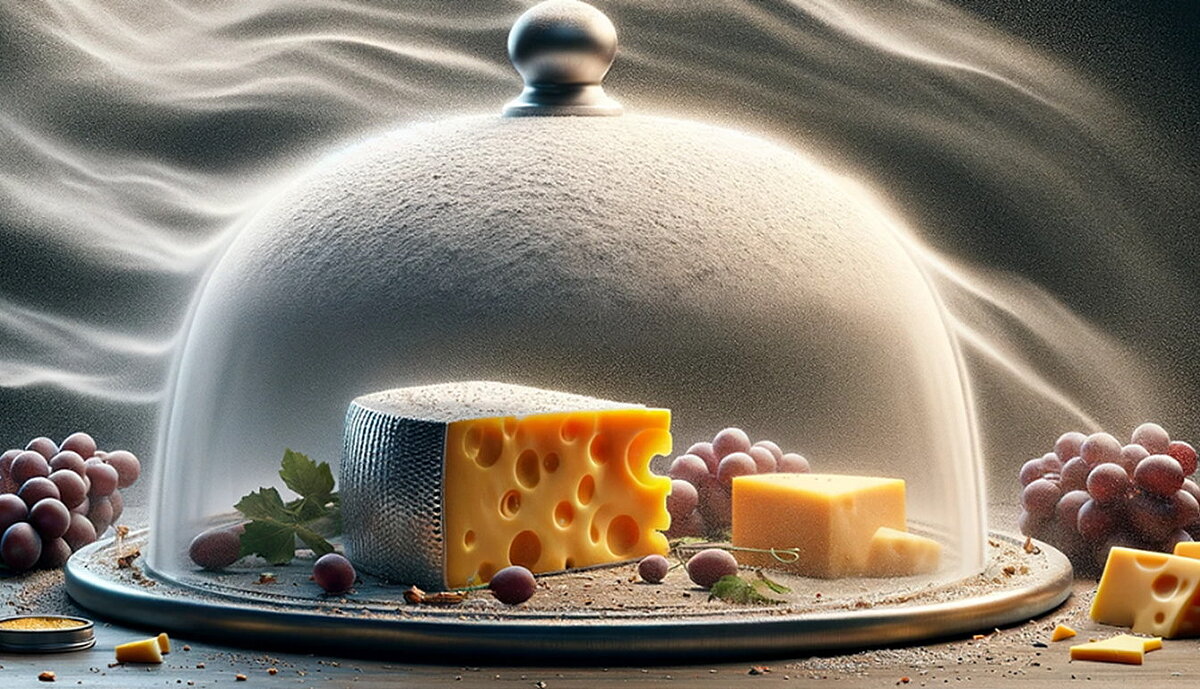
Whether lithography, pharmaceuticals, the food industry or aerospace: the manufacture and assembly of highly sensitive systems takes place under strict cleanroom conditions.
The environmental conditions are also very clean during operation, as contamination from dust or bacteria has no place in yoghurt or pharmaceuticals, for example.
In the vast majority of cases, however, the manufacture and operation of such systems take place at different locations. A system must therefore be packed, transported and unpacked again.
What else can happen during transportation by crane, truck, ship or plane is of no further interest to us. If necessary, the FEM department at Merkle CAE Solutions can take care of that.
However, it should be clear that the environmental conditions during transportation are not exactly clean when the satellite is transported from Oberpfaffenhofen to the rocket launch site in Kourou, French Guiana. Even the lithography machine is not transported from Oberkochen to the chip factory through a clean room tunnel, but enjoys the Swabian farmhouse air. I only use this expression because as I am writing this article, tractors are driving past my window honking loudly through Heidenheim. And rightly so, in my opinion!
At some point, however, the packaging (cheese bell) has to be removed from the extremely clean piece of jewelry (the cheese!).
It is unclear what happens to the dirt collected on the packaging during transportation. Does it possibly end up on the cheese again unintentionally?

In the following, we will take a closer look at this unpacking process with the help of a numerical CFD simulation using our cheese example.
At the beginning of our CFD simulation example, the dust is only on the cheese bell (see Figure 1). The bell is now removed (swiveled 90 degrees to the side) and we take a look at what the dust particles are doing.
When lifting off, the particles first move away from the cheese with the bell. However, a vacuum and a vortex are created above the cheese. The vortex spreads around the bell.
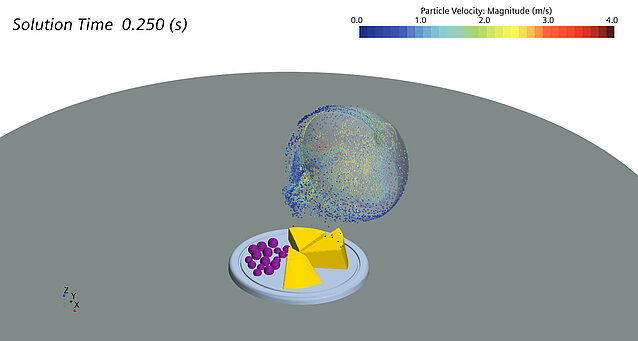
As the CFD simulation shows, the negative pressure caused by the movement of the packaging leads to a backflow, so that particles that were previously on the bell jar can now blow over the unprotected cheese and be deposited there again.
Even if unpacking is again carried out under cleanroom conditions, the clean airflow coming from the ceiling, which has a maximum flow velocity of 0.4 m/s, only pushes the dirt slightly downwards and distributes it in the room. The speed of the particles is sometimes greater and is not particularly impressed by the basic flow in the ISO 3, 5 or 8 cleanroom.
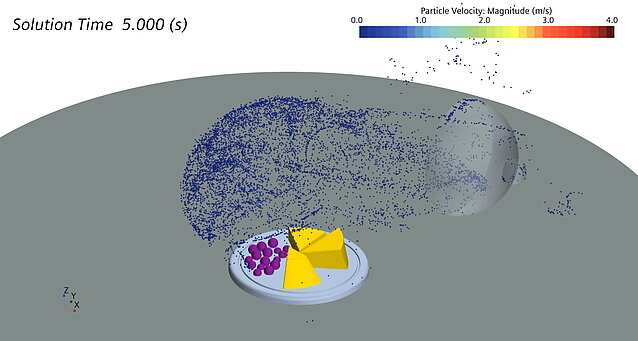
In our example, the speed of the air flow is up to 3 m/s.
At Merkle CAE Solutions, we can tell you exactly what happens in detail and what solutions may be available for your projects to avoid this contamination during unpacking.
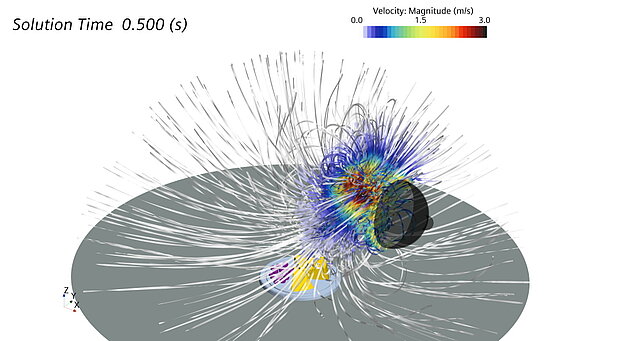
Take a look at the following video of the CFD flow simulation to get an impression of what happens physically.
If you are still interested in the topic, apart from the evening snack at home, we look forward to hearing from you.
Your contact person is Chadi Serhan.
Yours Stefan Merkle
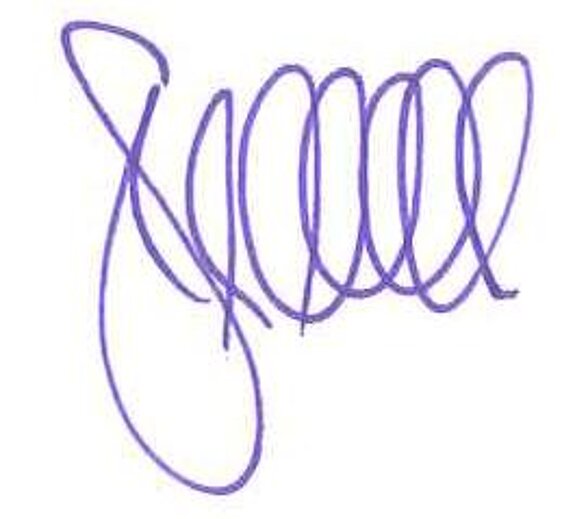
PS: For the technically interested: The CFD simulation is a transient flow simulation in which the particles interact with the flow.
Feedback from the dust particles to the flow is not taken into account, but in this case it does not play a role. This means that the flow does not care whether the dust is there or not. The movement of the dust, on the other hand, is completely dominated by the flow. The dust is subject to the current in an almost slavish relationship and can only sink calmly where the current leaves it largely alone.
The computing times of such simulations are considerable here, as the environment must also be networked and the real period to be examined can be in the range of minutes or even hours. However, we at Merkle CAE SOlutions can tell you what will happen after just a few seconds of real time and a few hours of computing time.
PPS: The purpose of the cheese cover is not only to protect the cheese from dust, but also to protect the environment and the rest of the refrigerator from the cheese and its vapors. But you already knew that. 😊
Whether lithography, pharmaceuticals, the food industry or aerospace: the manufacture and assembly of highly sensitive systems takes place under strict cleanroom conditions.
The environmental conditions are also very clean during operation, as contamination from dust or bacteria has no place in yoghurt or pharmaceuticals, for example.
In the vast majority of cases, however, the manufacture and operation of such systems take place at different locations. A system must therefore be packed, transported and unpacked again.
What else can happen during transportation by crane, truck, ship or plane is of no further interest to us. If necessary, the FEM department at Merkle CAE Solutions can take care of that.
However, it should be clear that the environmental conditions during transportation are not exactly clean when the satellite is transported from Oberpfaffenhofen to the rocket launch site in Kourou, French Guiana. Even the lithography machine is not transported from Oberkochen to the chip factory through a clean room tunnel, but enjoys the Swabian farmhouse air. I only use this expression because as I am writing this article, tractors are driving past my window honking loudly through Heidenheim. And rightly so, in my opinion!
At some point, however, the packaging (cheese bell) has to be removed from the extremely clean piece of jewelry (the cheese!).
It is unclear what happens to the dirt collected on the packaging during transportation. Does it possibly end up on the cheese again unintentionally?

In the following, we will take a closer look at this unpacking process with the help of a numerical CFD simulation using our cheese example.
At the beginning of our CFD simulation example, the dust is only on the cheese bell (see Figure 1). The bell is now removed (swiveled 90 degrees to the side) and we take a look at what the dust particles are doing.
When lifting off, the particles first move away from the cheese with the bell. However, a vacuum and a vortex are created above the cheese. The vortex spreads around the bell.

As the CFD simulation shows, the negative pressure caused by the movement of the packaging leads to a backflow, so that particles that were previously on the bell jar can now blow over the unprotected cheese and be deposited there again.
Even if unpacking is again carried out under cleanroom conditions, the clean airflow coming from the ceiling, which has a maximum flow velocity of 0.4 m/s, only pushes the dirt slightly downwards and distributes it in the room. The speed of the particles is sometimes greater and is not particularly impressed by the basic flow in the ISO 3, 5 or 8 cleanroom.

In our example, the speed of the air flow is up to 3 m/s.
At Merkle CAE Solutions, we can tell you exactly what happens in detail and what solutions may be available for your projects to avoid this contamination during unpacking.

Take a look at the following video of the CFD flow simulation to get an impression of what happens physically.
If you are still interested in the topic, apart from the evening snack at home, we look forward to hearing from you.
Your contact person is Chadi Serhan.
Yours Stefan Merkle

PS: For the technically interested: The CFD simulation is a transient flow simulation in which the particles interact with the flow.
Feedback from the dust particles to the flow is not taken into account, but in this case it does not play a role. This means that the flow does not care whether the dust is there or not. The movement of the dust, on the other hand, is completely dominated by the flow. The dust is subject to the current in an almost slavish relationship and can only sink calmly where the current leaves it largely alone.
The computing times of such simulations are considerable here, as the environment must also be networked and the real period to be examined can be in the range of minutes or even hours. However, we at Merkle CAE SOlutions can tell you what will happen after just a few seconds of real time and a few hours of computing time.
PPS: The purpose of the cheese cover is not only to protect the cheese from dust, but also to protect the environment and the rest of the refrigerator from the cheese and its vapors. But you already knew that. 😊